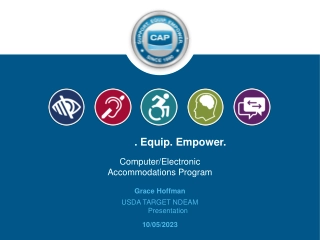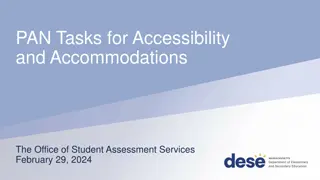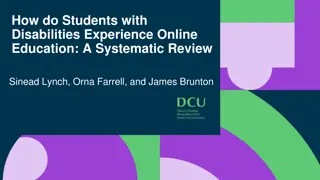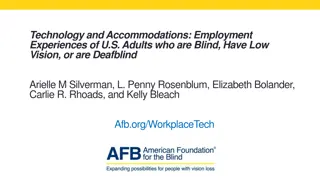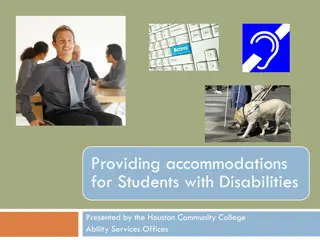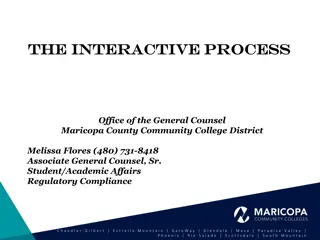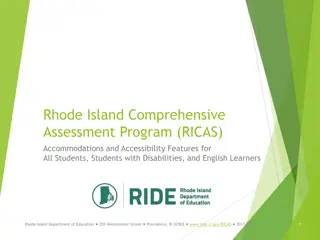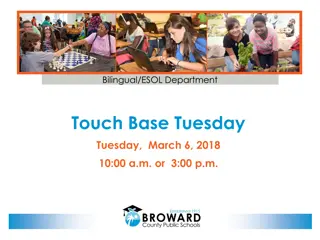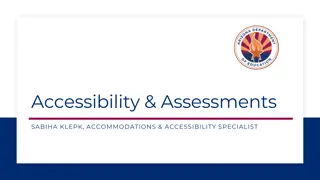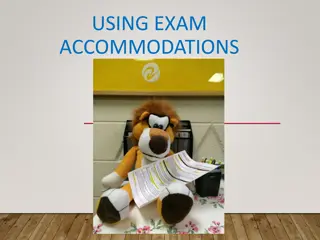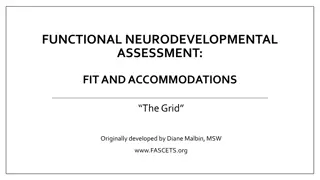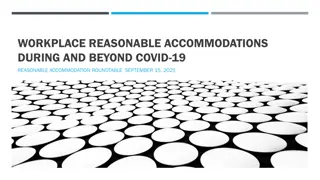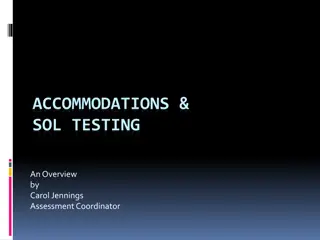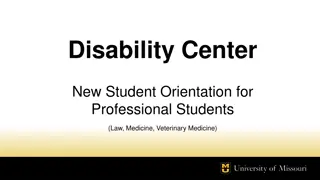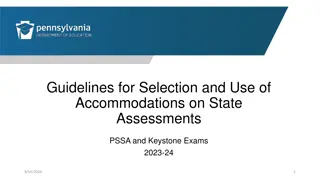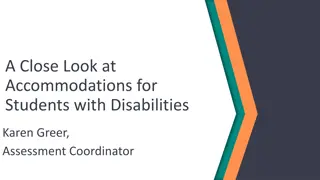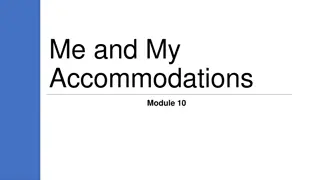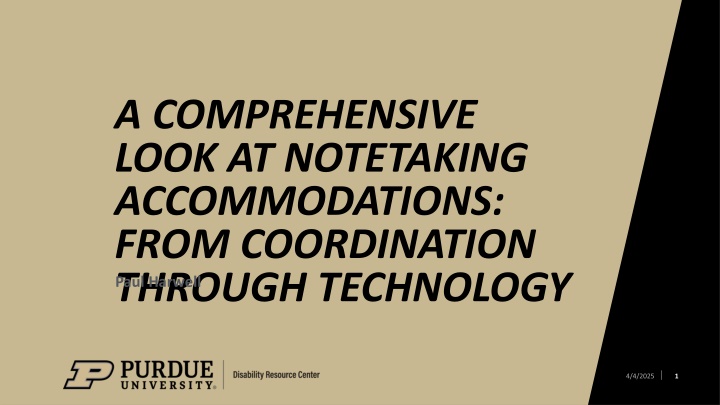
Comprehensive Look at Notetaking Accommodations: Strategies and Best Practices
Explore best practices and strategies for implementing notetaking accommodations, covering topics such as accommodation determination, fitting accommodations to individual needs, and utilizing technology tools. Learn how to support students effectively in their notetaking processes.
Download Presentation

Please find below an Image/Link to download the presentation.
The content on the website is provided AS IS for your information and personal use only. It may not be sold, licensed, or shared on other websites without obtaining consent from the author. If you encounter any issues during the download, it is possible that the publisher has removed the file from their server.
You are allowed to download the files provided on this website for personal or commercial use, subject to the condition that they are used lawfully. All files are the property of their respective owners.
The content on the website is provided AS IS for your information and personal use only. It may not be sold, licensed, or shared on other websites without obtaining consent from the author.
E N D
Presentation Transcript
A COMPREHENSIVE LOOK AT NOTETAKING ACCOMMODATIONS: FROM COORDINATION THROUGH TECHNOLOGY Paul Harwell 1
Best Practices for Notetaking Accommodations Purpose Notetaking accommodations are critical in our field, but we have rarely taken time to reflect on the best practices Innovations have focused on technology tools and less on practice This talk is intended to share a broad overview of elements to consider to develop a holistic approach to supporting notetaking accommodations 2
Best Practices for Notetaking Accommodations Learning Outcomes Understand the underlying processes and purpose of taking notes Build awareness of best practices for supporting a holistic approach to notetaking accommodations 3
Best Practices for Notetaking Accommodations Accommodations Determine accommodations with an affirmative rationale Remember to focus on access Make accommodations clear to students and faculty Avoid combining multiple accommodations into one statement Support accommodations with coaching on strategies and tools Continually assess students experiences with various notetaking accommodations and support systems 4
Best Practices for Notetaking Accommodations Accommodation Fit Difficult to tease apart disabilities and notetaking skill Use the interactive process to determine what barriers exist and the accommodations/strategies that mitigate or remove those barriers Accommodations should only supplement the amount of notes necessary for access Ask reflective questions about experiences and needs How do you usually take notes (type, handwrite, record, etc.)? Why? How do you feel about your notes (likes/dislikes, Success/failures)? Have you tried other tools, strategies, or accommodations? If they have a specific request in mind, why that one? 5
Best Practices for Notetaking Accommodations Anecdotal Observations I type because I can t keep up I don t take notes, I just listen I don t know what to write down On-Demand lectures: Pause/play to get everything just right Limited practice as notetakers and studying notes Compare self to peers negatively 6
Best Practices for Notetaking Accommodations Notetaking Research Encoding hypothesis: the act of processing while taking notes improves learning outcomes (p. 1159) External-storage hypothesis: the act of reviewing notes (from self or others) improves learning outcomes (p. 1159) These are not mutually exclusive, both are important Encoding benefits increase with engaging the lecture, verbatim notes are shallow and predict poorer performance More detailed notes have been correlated with increased performance Key Source: The Pen Is Mightier Than the Keyboard: Advantages of Longhand Over Laptop Note Taking (2014) by Mueller, P.A. and Oppenheimer, D.M 7
Best Practices for Notetaking Accommodations Applying the Research Students benefit from engaging lecture Students notes are better when they have deeper meaning Students should avoid verbatim notes, transcripts Handwriting is correlated with better performance Digital notetaking can work too Intentionally avoid tendency toward transcript Practice paraphrasing, short-hand, and making meaningful notes Turn off digital distractions Students benefit from knowing this information 8
Best Practices for Notetaking Accommodations Common Accommodations Independent Accommodations Goal is to supplement gaps in notes Permission to audio record lecture Copies of lecture slides and materials Photos of the board or overheads Use of notetaking technology in the classroom Dependent Accommodations Goal is to provide complete copy of notes Copies of notes from others (usually peers) 9
Best Practices for Notetaking Accommodations Recording Lecture Independent accommodations provide safety net for students while building their skills as a notetaker CRITICAL to coach students to effectively fill gaps in their notes Method varies by tools/recordings Plan for visual information that is not picked up by audio Consider organization (colors, structure, sketches, importing slides) Avoid perfection (share lessons from research) Plan/discuss how to study notes Top 10 strategy Pare down 10
Best Practices for Notetaking Accommodations Tools of the trade/Technology When you focus on the tool rather than the problem you are trying to solve, you have already missed the point. There are no one size fits all tools and they constantly change Practice with the tools and strategies you may recommend so that you know how it can be used to solve a problem Two most common areas of concern: missing information and organization Microsoft OneNote, Sonocent Audio Notetaker and Glean, Notability, Others Smartpens (Livescribe, Neo, others), Digital Recorders 11
Best Practices for Notetaking Accommodations Peer Notes Own the process, you are responsible for it anyway Training notetakers Monitor incoming notes (build a schedule) Be sure students know when/how to report missing/poor notes Paid and volunteer both work, but consider Creating a system with a pool of returning notetakers to be less reactive If volunteer, consider incentive programs Have a contingency plan for when notetakers are not available Automate as much as possible Avoid common trap of increased use when automated Continue to assess and improve 12
Best Practices for Notetaking Accommodations A Summary Use the interactive process to decide what note-taking accommodations are appropriate; move beyond the surface Accommodations should be very precise and should be determined by the DS office; DS is responsible for implementation Build a holistic approach to providing note-taking support and simultaneously train note-taking skills, technology, and strategy Automate as much as you can automate Make data-driven decisions to continuously improve the peer note-taker system 13
Best Practices for Notetaking Accommodations Other Resources Taking Notes Crash Course (YouTube video): bit.ly/TakingNotesCC Note-taking Accommodations and Technology: The Basics Part I: bit.ly/NotetakingI | Part II: bit.ly/NotetakingII Notes No More by Cheryl Muller, M.Ed., University of Arizona AHEAD 2017 Conference Talk (2.10) | bit.ly/AHEAD_17_List Note-taking Research Information The pen is mightier than the keyboard: Advantages of Longhand Over Laptop Note Taking (Mueller, P.A. & Oppenheimer, D.M.; 2014) bit.ly/noteresearch Attention Students: Put Your Laptops Away (NPR Story) bit.ly/notesresearch_NPR 14
THANK YOU 15

